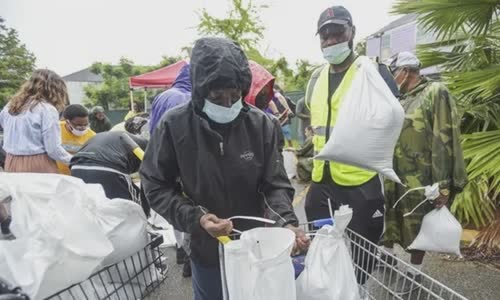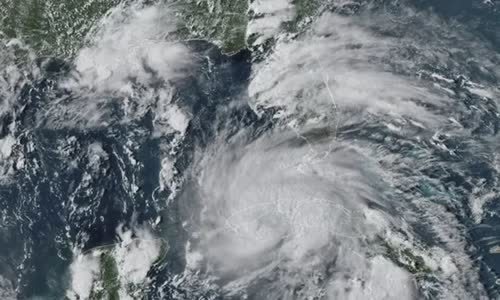People have evacuated from high-risk areas and long-term queues to buy necessities on August 27 when Louisiana prepares to catch the IDA storm.
IDA is expected to strongly go to Level 4 storm, extremely dangerous to landing into the southern region in the United States this weekend.

Photo: AP.
The national weather agency warns about the risk of hazardous danger threatening lives and strong winds when the storm landed along the state coast of Louisiana and Mississippi, calling for people in the affected area to follow the recommendations of the world
People of New Orleans, Louisiana, August 27 receive sandbags to reinforce the house to prepare for Ida storms.
Now is the time to act.
This is the second high level in the storm of Saffir-Simpson with a minimum wind power of 209 km / h.
Louisiana has announced an emergency to prepare to respond to storms, expected to land on August 29, 16 years from the horror Horror Katrina attacking this state, in flooding 80% of New Orleans city and
Officials ordered mandatory evacuation outside of New Orleans Dyke Protection Areas and in coastal towns susceptible to flooding.
People are packing furniture and moves, Scooter ResWber, police chief of Grand Isle, Louisiana state, said.

Photo: AP.
Emergency, approved by President Joe Biden, will provide additional resources and aid to Louisiana to increase the efforts of response.
Hurricane Ida landed into the western Cuban area 27/8 at a level with a maximum wind of nearly 128 km / h.
It's time for Lousiana to prepare, John Bel Edward Tweet governor, calling for people to ensure that you and your family are ready for anything that happens.
Hurricane Ida swept through Cuba on August 27.
The national weather agency said storms were able to create heavy rain and serious floods from southeast Lousiana to Mississippi and Alabama coast.
Last week, a rare tropical storm attacked the waters of North America, causing power outages of thousands of households, causing breaking on trees and pouring down the record rainfall.
Scientists have long been warned about increasing the number of strong tornadoes when the ocean surface warmed up due to climate change, causing a growing threat to coastal communities throughout all over



 Jeff McDaniel
Jeff McDaniel







